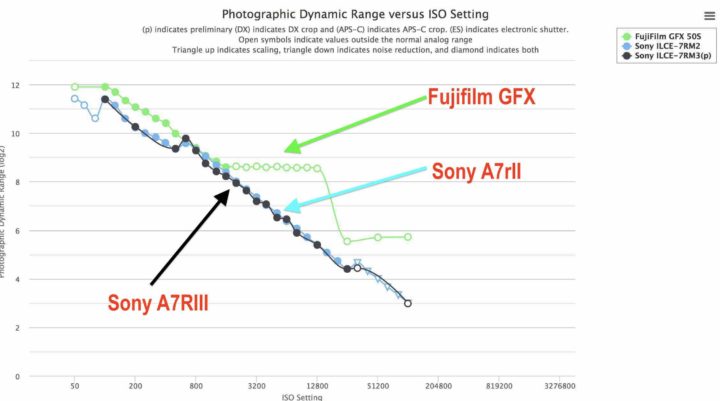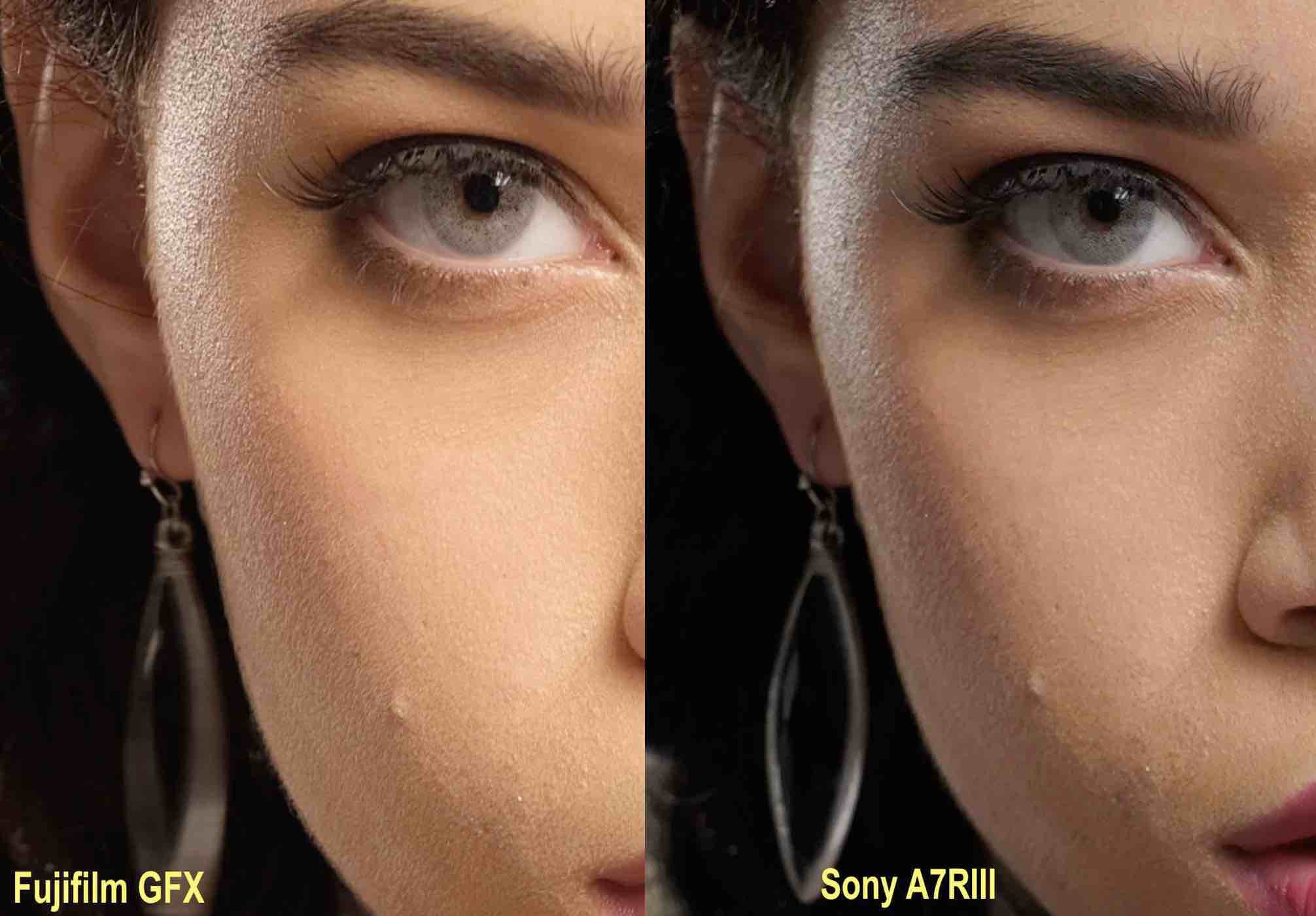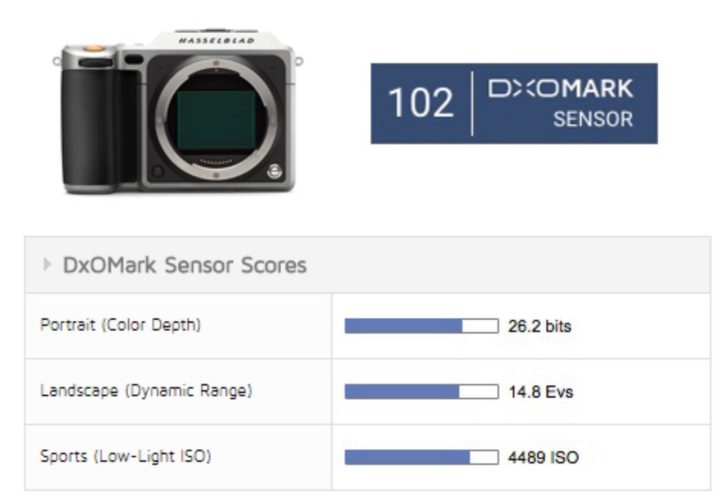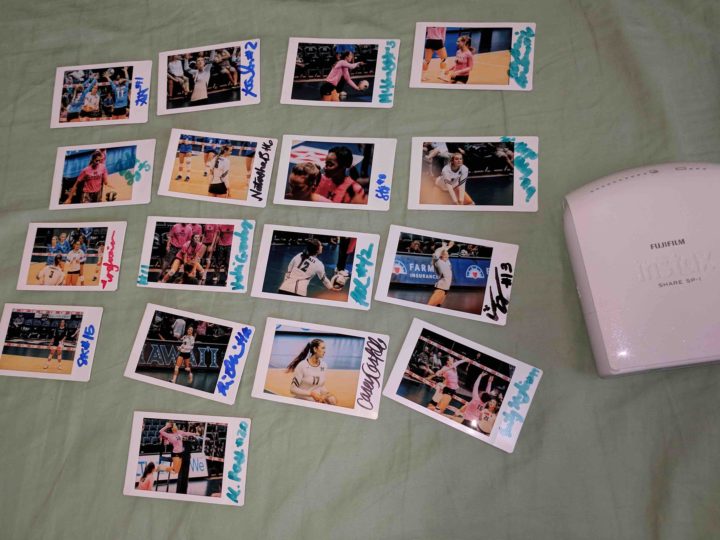Fujifilm GFX Vs. Sony A7RIII Dyanmic Range (Preliminary Comparison) + Sony A7rIII Really Sharper Than Fujifilm GFX 50S?

Dynamic Range
Photons to Photos has just shared their “preliminary” Sony A7RIII chart. “Preliminary” means that these are actual measurements from RAW files but not those taken under the usual controlled conditions. Historically preliminary data has been quite accurate at Photons to Photos.
So what does the chart tell us? It shows that the Fujifilm GFX 50S has a better dyamanic range.
More surprisingly, though, it seems that the brand new Sony A7rIII does not perform better than the Sony A7rII… and maybe even a little bit worst.
Preliminary tests might be relatively accurate, but before making any conclusions, we have to wait the final results.
Sharpness
Here on FujiRumors we were the first to report about the imaging-resource comparison between the Sony A7RIII and the Fujifilm GFX 50S.
We gave it a detailed look, digged deep into the camera settings, and reported comprehensively about it. Seems like I did an accurate job, since the entire article then was copied & pasted elsewhere, just as every article I write actually… which I take as the highest form of flattery ;)
But as much as I digged into the settings, thanks to our huge community and the lively comments, there is always something new to discover. And by analizing the images with the FujiRumors community, some highlighted that the Fujifilm GFX might be misfocused (as I already guessed in the original article).
Hera are again the original images and settings
- Fujifilm GFX 50S: 1/20th, F5, ISO250, SOOC Jpeg – see here
- Sony A7RIII: 1/40th, F5, ISO250, SOOC Jpeg – see here
Now, it’s your turn to pixel peep, and you are free to judge if the Fujifilm GFX has the focus really on the eye or on the temple. And keep in mind that, at f/5, the Fujifilm GFX will give you shallower DOF than the Sony A7rIII.
Also, the GFX was shot at 1/20, and the Sony at 1/40. And looking at the earrings it’s clear to see how the Fujifilm GFX captures more motion due to the slower shutter speed.
Any yet, it’s worth to highlight that the eye AF on the Sony seems to work really great :)
Sony A7rIII: BHphoto, Adorama, AmazonUS, FocusCamera
Fujifilm GFX 50S: BHphoto, Adorama, AmazonUS




